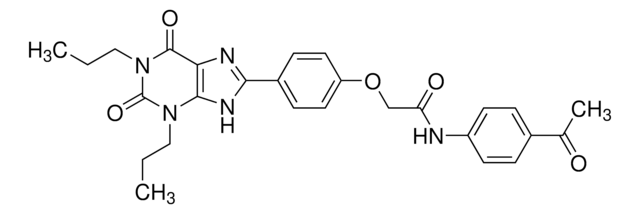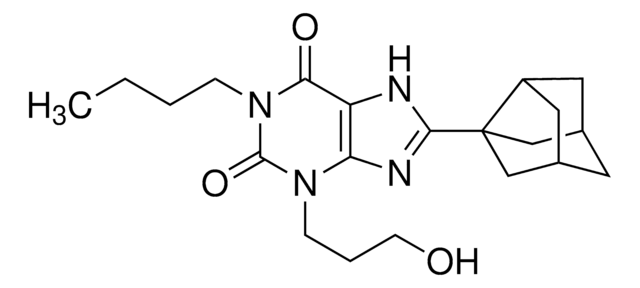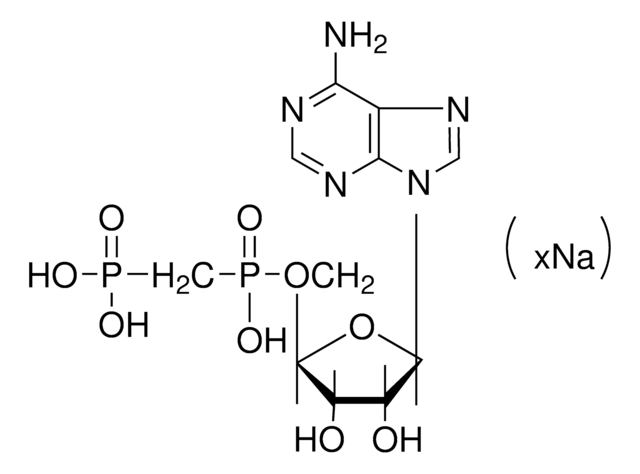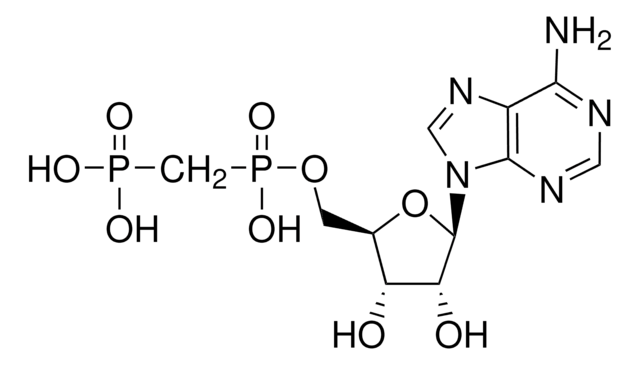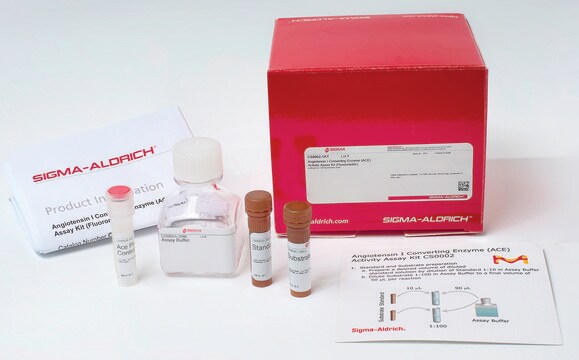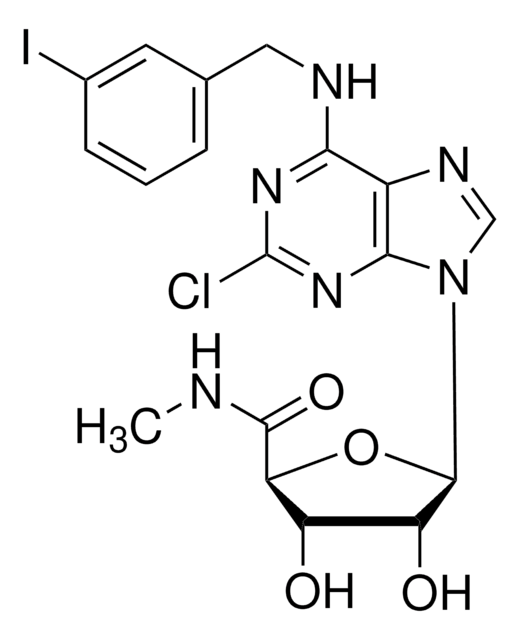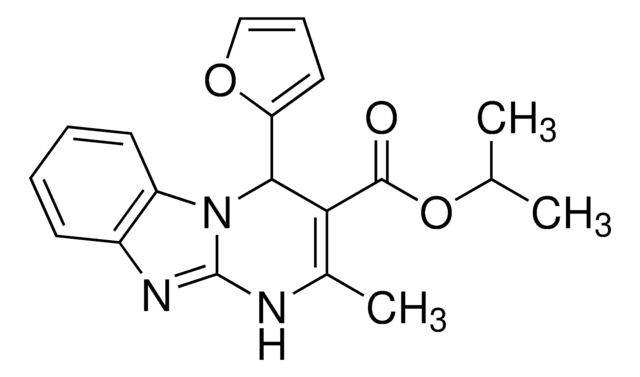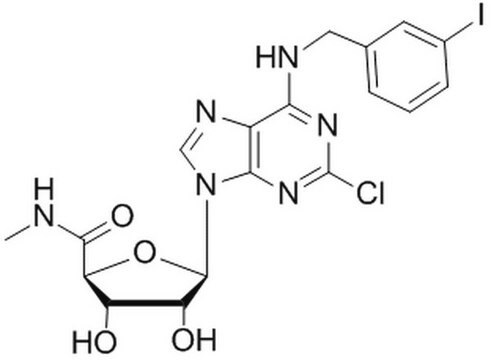M1809
MRS 1523
>98% (HPLC)
Synonym(e):
3-Propyl-6-ethyl-5-[(ethylthio)carbonyl]-2 phenyl-4-propyl-3-pyridine carboxylate
About This Item
Empfohlene Produkte
Qualitätsniveau
Assay
>98% (HPLC)
Form
oil
Farbe
colorless to light brown
Löslichkeit
DMSO: >10 mg/mL
H2O: insoluble
Versandbedingung
wet ice
Lagertemp.
2-8°C
SMILES String
CCCOC(=O)c1c(CCC)c(C(=O)SCC)c(CC)nc1-c2ccccc2
InChI
1S/C23H29NO3S/c1-5-12-17-19(23(26)28-8-4)18(7-3)24-21(16-13-10-9-11-14-16)20(17)22(25)27-15-6-2/h9-11,13-14H,5-8,12,15H2,1-4H3
InChIKey
UUSHFEVEROROSP-UHFFFAOYSA-N
Angaben zum Gen
human ... ADORA3(140)
rat ... Adora1(29290) , Adora2a(25369) , Adora3(25370)
Anwendung
Biochem./physiol. Wirkung
Leistungsmerkmale und Vorteile
Rechtliche Hinweise
Lagerklassenschlüssel
10 - Combustible liquids
WGK
WGK 3
Flammpunkt (°F)
Not applicable
Flammpunkt (°C)
Not applicable
Persönliche Schutzausrüstung
Eyeshields, Gloves
Analysenzertifikate (COA)
Suchen Sie nach Analysenzertifikate (COA), indem Sie die Lot-/Chargennummer des Produkts eingeben. Lot- und Chargennummern sind auf dem Produktetikett hinter den Wörtern ‘Lot’ oder ‘Batch’ (Lot oder Charge) zu finden.
Besitzen Sie dieses Produkt bereits?
In der Dokumentenbibliothek finden Sie die Dokumentation zu den Produkten, die Sie kürzlich erworben haben.
Unser Team von Wissenschaftlern verfügt über Erfahrung in allen Forschungsbereichen einschließlich Life Science, Materialwissenschaften, chemischer Synthese, Chromatographie, Analytik und vielen mehr..
Setzen Sie sich mit dem technischen Dienst in Verbindung.

